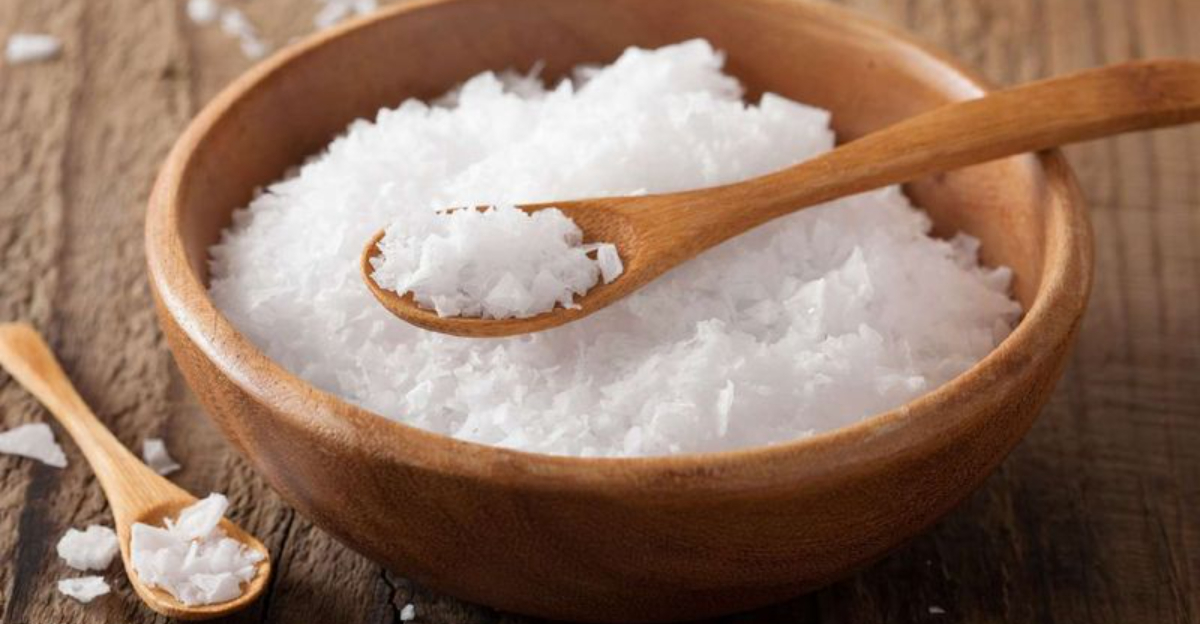9 Different Kinds Of Salt And How To Use Them For Cooking

Salt isn’t just salt these days. It’s a whole new world of flavor waiting to be explored. With so many unique varieties out there, the right salt can add depth, texture, and personality to your cooking.
After years of playing around with different types in my own kitchen, I’ve learned just how much these little crystals can transform even the simplest meals.
Now, I’m excited to share some favorites that can take your dishes to the next level.
1. Table Salt: The Everyday Staple
The most common salt in American kitchens comes highly processed with anti-caking agents and iodine (added in the 1920s to prevent goiter). Its fine, uniform crystals dissolve quickly, making it perfect for baking where precise measurements matter.
I keep mine in a small ramekin next to the stove for easy pinching. While not the most exciting option, table salt’s reliability makes it indispensable for everyday cooking and those late-night popcorn sessions!
2. Kosher Salt: The Chef’s Choice
Larger, flakier crystals define this kitchen workhorse. Unlike table salt, kosher salt contains no additives and provides better tactile feedback when seasoning—you can actually feel how much you’re using between your fingers!
The coarse texture clings beautifully to food surfaces, creating perfect crusts on steaks and roasts. Its name comes from its traditional use in koshering meat, though nowadays it’s beloved by professional chefs and home cooks alike for its clean taste and versatility.
3. Sea Salt: Ocean’s Bounty
Harvested directly from evaporated seawater, sea salt maintains trace minerals that give it complex flavors varying by region of origin. The minimal processing preserves these natural elements, making each variety slightly different.
Last summer, I brought back Sicilian sea salt from vacation, and its subtle brininess completely transformed my tomato salads!
Use it as a finishing salt where its texture and flavor nuances shine, sprinkled over caramels, roasted vegetables, or the rim of a margarita glass.
4. Fleur de Sel: The Delicate Flower
Often called the “caviar of salts,” this hand-harvested treasure forms as a thin crust on seawater’s surface in certain coastal regions of France. Its delicate, pyramid-shaped crystals carry a hefty price tag but deliver unmatched complexity.
The moisture-retaining crystals create tiny bursts of flavor that slowly dissolve on the tongue. Reserve this precious salt for finishing dishes just before serving.
A light sprinkle over fresh sliced tomatoes or homemade caramels will demonstrate why chefs worldwide consider it worth every penny.
5. Himalayan Pink Salt: The Instagram Star
Those rosy crystals taking over food photography come from ancient sea beds in Pakistan’s Punjab region. The distinctive color stems from iron oxide and other minerals trapped within the salt during formation millions of years ago.
Beyond its photogenic qualities, I’ve found it adds subtle mineral notes to dishes. My salt grinder filled with pink crystals has become quite the conversation starter at dinner parties!
Besides cooking, these pink rocks are carved into serving plates, cooking surfaces, and even spa treatments.
6. Smoked Salt: Campfire in a Jar
Cold-smoking sea salt over various woods infuses it with aromatic compounds that bring instant depth to dishes. Different smoking materials (alderwood, hickory, applewood) create distinct flavor profiles ranging from bacon-like to subtly sweet.
A pinch transforms ordinary scrambled eggs into something extraordinary. My camping trips inspired me to keep smoked salt in my pantry; one whiff takes me back to fireside cooking!
Add it to chocolate chip cookies for a mind-blowing sweet-savory experience that’ll have everyone asking for your secret ingredient.
7. Celtic Grey Salt: The Mineral Powerhouse
Hand-harvested from clay-lined salt ponds in Brittany, France, this moist, unrefined salt retains a wealth of minerals and slightly grey color from the clay. Its distinctive briny flavor carries subtle complexity from over 80 trace elements.
The naturally moist texture makes it perfect for salt crusts on fish or meat. I became obsessed after a French chef friend introduced me to it years ago.
Unlike most salts, it doesn’t immediately dissolve when cooking, creating pleasant little bursts of flavor throughout dishes.
8. Flavored Salts: Creative Fusions
Salt plays beautifully with other ingredients—herbs, spices, citrus zest, wine, truffles—creating endless possibilities for custom seasonings. These blends deliver complex flavors in a single sprinkle, streamlining your cooking process while maximizing impact.
My homemade rosemary-lemon salt has rescued countless roast chickens in my kitchen! Creating your own is surprisingly simple: just combine sea salt with dried herbs or zest and pulse in a food processor.
Store in airtight containers and use as finishing touches on everything from popcorn to pasta.
9. Kala Namak: The Sulfurous Surprise
This pinkish-brown Indian salt contains natural sulfur compounds, creating an unmistakable egg-like aroma. Despite its intense smell, it adds remarkable depth to dishes, particularly in South Asian cuisine, where it’s a staple.
Vegans treasure this salt for creating egg-like flavors in tofu scrambles. The first time I opened a jar, my kitchen smelled like hard-boiled eggs!
Don’t let that deter you. Used sparingly, it transforms chaat, chutneys, and raitas with authentic flavor impossible to achieve any other way.
